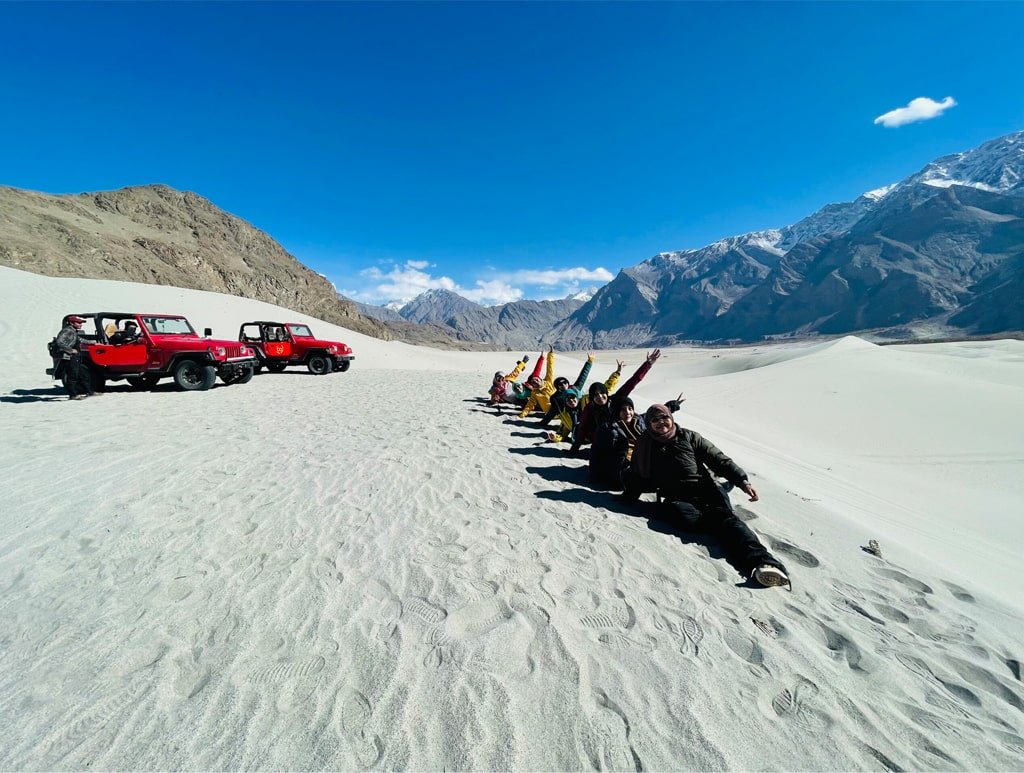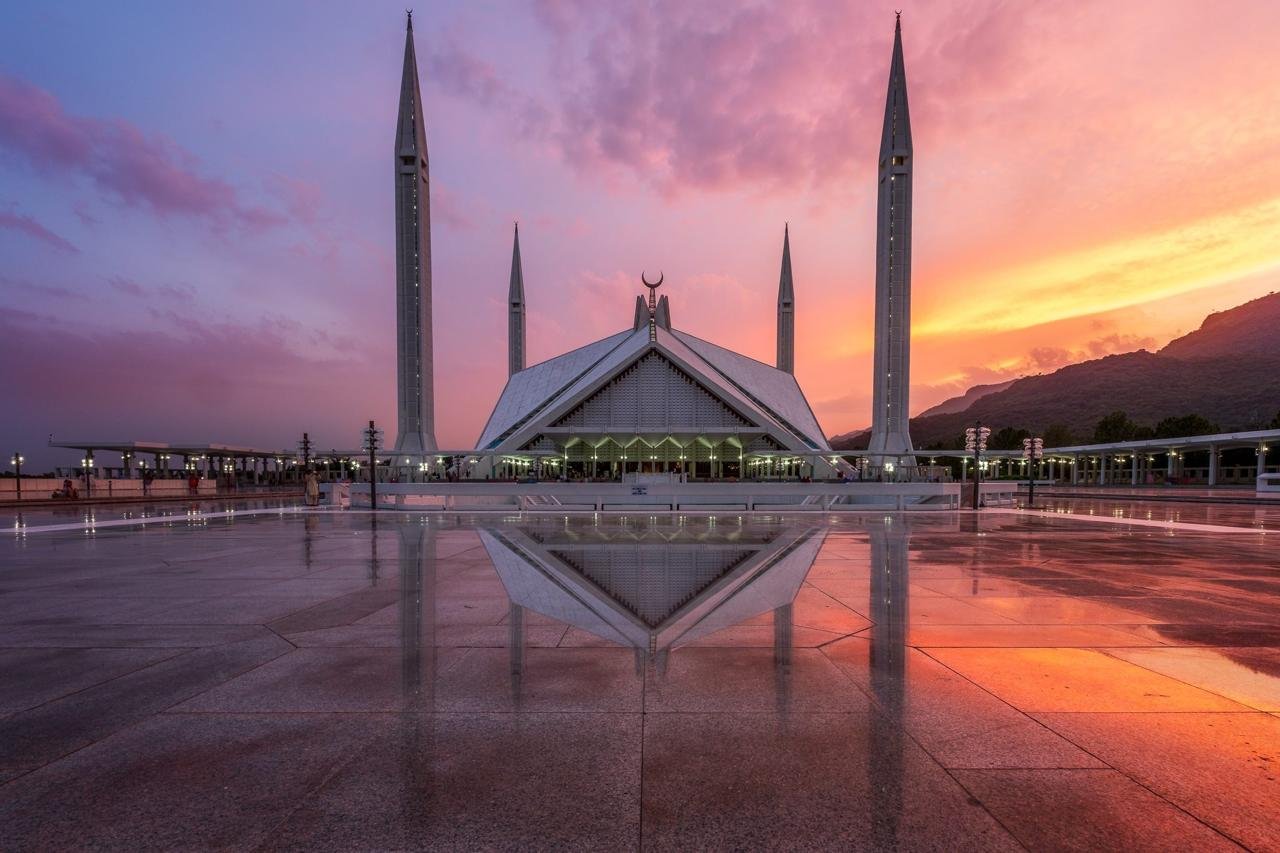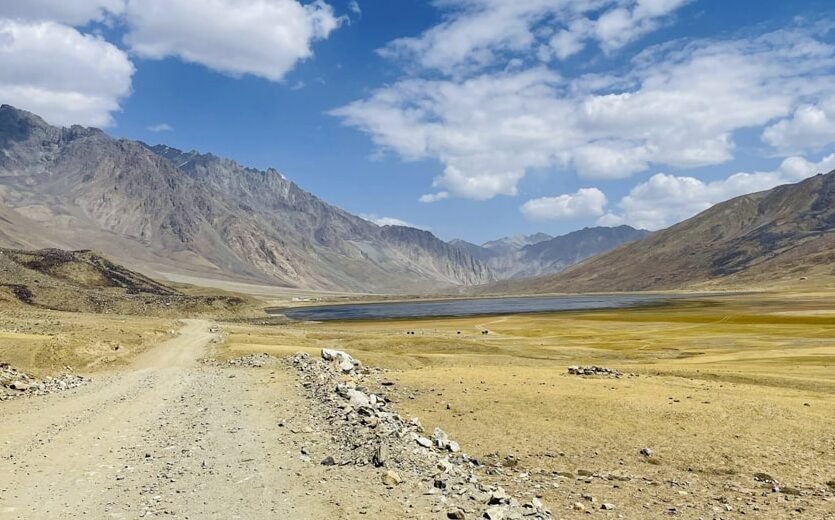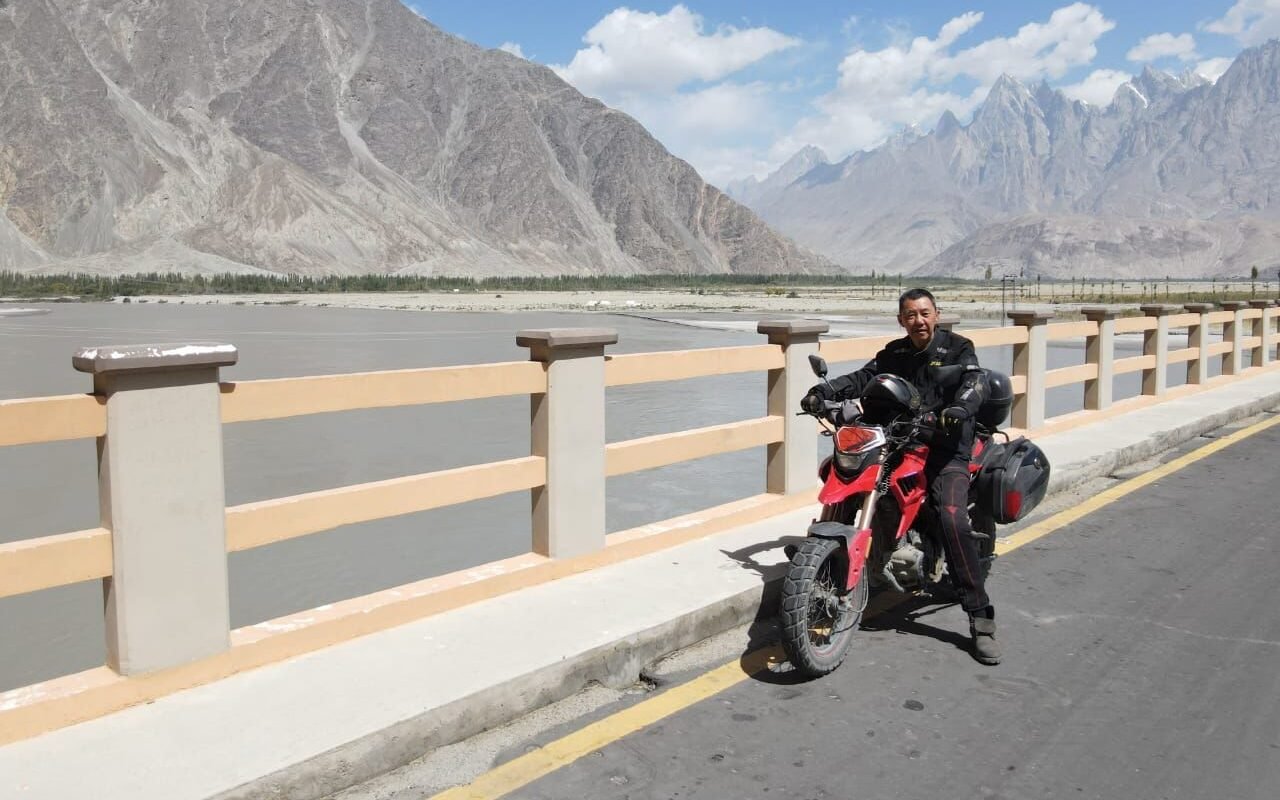The Shigar road runs through the cold desert to the mystic Shigar valley as you travel north of Pakistan towards Skardu valley. This historic valley, with its architectural heritage and fascinating historical tales, invites tourists to come and explore it. Shigar Valley, a verdant oasis of glaciers, mountains, lakes, hot springs, and the Shigar River. This is an ancient kingdom of the Amacha Dynasty, located along the Braldu River’s banks. The Braldu glacier is located on the outskirts of the world’s second highest peak, K-2.
Its beautiful landscape is abundant in minerals and fruits such as walnuts, grapes, peaches, pears, and apricots.
Shigar valley, 52 kilometres from Skardu, covers an area of 170 kilometres. Skardu to Shigar road takes 1 hour and 30 minutes by jeep. PIA operates one-hour scheduled flights between Islamabad International Airport and Skardu Airport, which is 45 minutes away from Serena Hotel Shigar. The hotel also provides the services of private and charter helicopters.
Askole is the last town of Shigar and the base camp for mountaineering expeditions to K-2. It is known as the “Gateway to the World’s 14 Highest Peaks” or the “Eight-thousanders” (above 8,000 metres ASL). It takes 3 to 4 days to trek from Askole through dangerous alleyways, rope bridges, moraines and glaciers to reach Concordia. All fourteen eight-thousanders can be seen from there, including Gasherbrum I, Gasherbrum II, Broad Peak, and K-2.
The hikers, who do not want to take on the most dangerous treks in the Karakoram Mountain range, there are 7th-century Buddha relics and scriptures, as well as other ancient rock carvings, in Manthal near Shigar Fort. These can be reached after an hour hike along a scenic trail. Hikers can also explore the hot springs in Shigar.
Askole is the place from where you can see the Himalayan, Karakoram ranges and the longest glacier, Baltoro. It takes five days to reach Baltoro glaciers from Askole. Trekking on glacial moraine is a difficult task.
The trek from Askole to K-2 base camp, “Concordia,” takes 7 days. Concordia is the starting point for mountaineering expeditions to many eight-thousanders.
A route from Askole to K-2 turns North-West to the Biafo Glacier towards Snow lake. The journey to Snow lake is difficult. On this trek, you can see mountains as high as 7000 metres. Hispar trek is included in top five most difficult treks in the world.
Shigar Valley’s landscape is adorned with astounding ancient architectural ornaments. The 17th-century historical Fong-Khar Fort, 16th-century Khanqa-e-Muallah and 14th-century Amburiq Mosque reveal architectural treasures of the past.
Fong Khar Fort is among the heritage sites of Shigar. It was built in the early 17th century on the bank of the Shigar River by the 20th Raja of the Amacha Dynasty, Raja Hassan Khan. At a height of 2,250 metres above sea level, the fort reflects the diversity of nature and the rich history of Shigar.
Raja Muhammad Ali Shah Saba built the historic Shigar fort in the early twentieth century. The fort was turned into a heritage site by AKCSP/AKTC and managed by Serena Hotel. Part of it is a museum with well-preserved relics.
To the East is a Mughal-style garden. There is a beautiful central Baradari with a marble base surrounded by a pool of fresh spring water.
Shah Nasir Tussi, who came from Tus in Persia and laid its foundations in 1602, built the Khanqa-i-Mullah, the mosque and the travel-lodge. The incredible wooden work on the balconies and ceilings leaves one in awe of the masterful craftsmanship.
Amburiq Masjid was designated a UNESCO World Heritage Site in 2005. This is one of Baltistan’s oldest mosques. Syed Ali Hamdani, a Persian Sufi, poet, and Muslim scholar who preached Islam in the Kashmir Valley, built the mosque. As the Masjid is renovated by Aga Khan Cultural Services, Pakistan. A small museum has been established within it by AKCSP.
Amburiq Masjid and Khanqah architecture is similar to Khaplu’s Chaqchan Mosque and Khaplu Khanqah.
The Hashupi Bagh is surrounded by lush green orchards and lawns with plants of cherries, apricots, apples and grapes all around. Many small water streams flow calmly across the lawns. The entrance to the fort opens onto a large garden that leads to the Chinpa village and Chaara. The Hashupi Bagh (the apple garden) is a unique orchard that grows a variety of organic fruits in addition to apples. The grapevine-covered terrace of the Shigar fort has been converted into a restaurant, offering a beautiful view of the valley with a gushing white stream.
Blind lake, also known as Zharba lake, is about a 25-minute drive from Shigar. The breathtaking view of the blue waters of the lake is worth it.
The popular tourist attractions of Shigar valley are as follows.
Dambuchan Hurchose Shigar
Shigar Fort
Amburiq Masjid
Khilingrong Masjid
Khanqah-e-Muallah
Hashoo pi Bhag
Khubanistan Agri (Model Village)
Khubanistan Ranga
Marapi Ranga
Ree Masjid
Astana of Syed Mir Yahya
Khureed Ranga Gulabpura
Choutran (Garam Chashma)
Hlanokhore Bridge
Khanqah Gulabpura
Wazirpur Khanqah
Bissel (Garam Chasma)
Hassan Abad (Bunpa)
Kharmang Pi Dus
In Shigar Valley, a variety of gemstones are mined. Beryl (goshenite and aquamarine), tourmaline (schorl), garnet (almandine spessartine), apatite, topaz, fluorite, zoisite, clinozoisite, and axinite are found in complex pegmatite and metamorphic rocks.
Serena Hotel at Shigar Fort
River View Hotel
Space Hotel
Government-run guest houses
These all offer budget-friendly accommodation with good amenities.
Shigar is a lovely place to visit if you want to explore a beautiful valley with a rich cultural history, where you can pluck fresh and juicy fruits while strolling through the aromatic and vibrant garden. Come to Shigar, unwind, eat organic food, pick fresh fruits, practise your photography and relax.
Author: Fehmeeda Farid Khan




